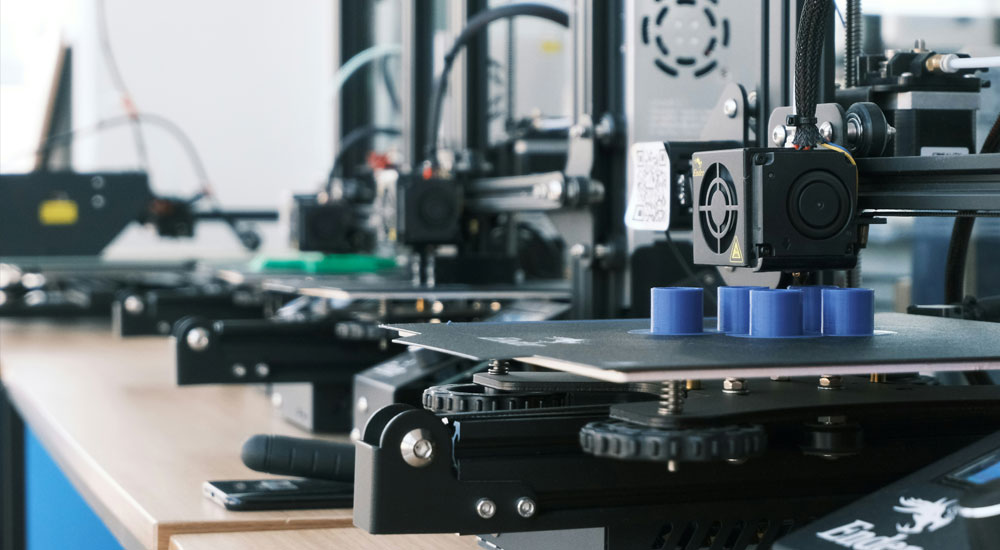10 Tips To Optimize Product Development Efficiency
Product development is the process of creating new goods or services for the market. It involves generating ideas, refining them into concepts, designing and engineering prototypes, testing and validating them, planning manufacturing, marketing, launching, and evaluating post-launch performance for further iteration. Collaboration among various teams and consideration of market trends, competition, and customer preferences are essential throughout the process.
Efficient product development reduces the time it takes to bring a product to market. In fast-paced industries, being first to market can provide a significant competitive advantage, capturing market share and generating revenue before competitors. This article outlines ten essential strategies to streamline product development, helping teams achieve greater efficiency and deliver superior outcomes in today’s fast-paced business environment.
1.Clear Definition of Goals and Objectives
Teams need to comprehend the problem their product addresses and identify their target audience to tailor their efforts effectively.
Defining success provides a roadmap, guiding every decision throughout development and preventing unnecessary detours. This clarity ensures efficient resource allocation and focused development efforts, delivering value where it matters most.
For instance, integrating modern manufacturing technologies such as a plastic injection molding machine can streamline production processes. This enhances cost-effectiveness and scalability while maintaining product quality, which is one of the most common goals in product development.
2. Embrace Agile Methodologies
Scrum or Kanban transforms the product development process by introducing flexibility and dynamism. Unlike traditional approaches with fixed plans, Agile promotes iterative enhancements driven by ongoing feedback loops.
This method entails breaking the project into smaller, manageable tasks and arranging them into time-limited iterations known as sprints. This enables teams to promptly adjust to evolving requirements or market conditions, delivering incremental value throughout the development process.
Agile methodologies prioritize team collaboration and communication through daily stand-up meetings or scrums. That way, team members can synchronize efforts, review progress, and address obstacles.
Moreover, retrospectives at sprint ends facilitate process reflection, improvement identification, and implementation. This feedback loop promotes collaboration, transparency, and continuous enhancement, empowering teams to swiftly adapt to challenges and deliver top-notch products meeting customer needs.
3. Foster Cross-Functional Collaboration
One of the primary advantages of cross-functional collaboration is the enhanced communication and cooperation it facilitates. When developers, designers, marketers, and other stakeholders work together from the outset of a project, they can better understand each other’s goals, constraints, and priorities.
Moreover, involving cross-functional teams in the product development process enables faster decision-making and problem-solving. With input from individuals with different expertise and perspectives, teams can explore a wider range of potential solutions, evaluate their merits more thoroughly, and make informed decisions more efficiently.
Furthermore, cross-functional collaboration promotes a sense of ownership and accountability among team members. This helps build a deeper appreciation for the contributions of their colleagues and the interdependencies of their respective roles.
4. Prioritize Features and Requirements
Deciding which features and needs are most important in product development to avoid things getting out of control and causing delays.
Using techniques like MoSCoW prioritization helps teams concentrate on the most important stuff first while still leaving room for improvements later. This helps ensure that we use our resources wisely and handle important features promptly. As a result, projects are more likely to finish on time and produce successful products that meet what customers want.
MoSCoW prioritization categorizes features into four groups: “Must-Have,” “Should-Have,” “Could-Have,” and “Won’t-Have,” aiding teams in assessing their importance. This helps teams focus on critical features, streamlining development, preventing delays, and meeting current needs and future goals.
5. Invest in Automation
Investing in automation is crucial for optimizing the product development process and enhancing efficiency. Automation tools and techniques enable teams to accelerate tasks and minimize errors. Continuous integration and continuous delivery/continuous deployment (CI/CD) pipelines play a vital role in automating build, test, and deployment processes, guaranteeing seamless integration and deployment of code changes.
This accelerates feature delivery while upholding code quality across diverse environments. Automated testing frameworks help find problems in the software early on, which means developers don’t have to spend as much time manually testing and fixing issues. This frees them up to focus on adding new features to the software instead.
When organizations invest in automation, they can work smarter, make products faster, and ensure they’re top-notch when they hit the market. By automating tasks that are done repeatedly and making sure the testing is thorough, they can avoid delays, get more done, and make customers happier with what they offer.

6. Adopt Lean Principles
Adopting lean principles in product development can significantly enhance efficiency and effectiveness. At its core, lean thinking revolves around the idea of delivering maximum value to customers while minimizing waste. By applying these principles to the development process, teams can streamline workflows, eliminate inefficiencies, and ultimately deliver better products to market.
One of the key lean principles is identifying and eliminating waste. This can include anything that does not directly contribute to delivering value to the customer, such as unnecessary steps in the development process, excess inventory, or waiting time between tasks.
Furthermore, lean principles advocate for empowering teams to make decisions and solve problems at the grassroots level. By decentralizing decision-making authority and encouraging collaboration, teams can respond more quickly to challenges and capitalize on opportunities as they arise.
7. Leverage Prototyping and Rapid Iteration
Prototyping enables teams to quickly validate their ideas by creating tangible representations of their concepts. These prototypes serve as a visual aid, allowing stakeholders to understand the proposed solution better and provide feedback early in the development process. By doing so, teams can identify potential flaws or improvements before full-scale development.
Furthermore, prototyping facilitates rapid iteration, wherein teams can make iterative changes to their designs based on user feedback. Low-fidelity prototypes are particularly useful in the early stages of development for quickly testing broad concepts and gathering initial impressions. As feedback is collected and analyzed, teams can then refine their prototypes, gradually increasing the fidelity to incorporate more detailed features and functionality.
High-fidelity prototypes are instrumental in conducting more comprehensive user testing, as they closely resemble the final product in terms of appearance and functionality. By soliciting feedback from users through usability testing and user interviews, teams can gain valuable insights into how well the product meets user needs and expectations.
8. Implement Effective Project Management
Employing robust project management techniques helps teams effectively coordinate their efforts, stay on track with timelines, and allocate resources efficiently. Project management software streamlines workflows and facilitates collaboration. These tools enable teams to prioritize tasks effectively, designate responsibilities, and track progress in real time.
Another critical component of effective project management is setting realistic deadlines and milestones. Regular monitoring of progress against these deadlines allows project managers to identify potential bottlenecks or issues early on and take corrective action as needed.
9. Encourage Continuous Learning and Improvement
Encouraging continuous learning and improvement is fundamental to fostering innovation and excellence within product development teams. Recognizing that product development is an iterative journey, wherein organizations must value learning, adaptability, and experimentation.
It’s essential to instill a mindset of curiosity and openness to new ideas among team members. Emphasize the importance of remaining up-to-date about industry trends, emerging technologies, and evolving customer needs. Encourage individuals to actively seek out opportunities for learning, whether through workshops, conferences, online courses, or informal knowledge-sharing sessions.
Moreover, creating a safe and supportive environment that allows team members to share their insights, best practices, experiences, and lessons learned is critical. Provide platforms for sharing best practices, success stories, and even failures, as these can offer valuable learning opportunities for everyone involved.
10. Monitor Key Performance Indicators (KPIs)
Monitoring key performance indicators (KPIs) is a crucial aspect of managing product development effectively. KPIs serve as quantifiable benchmarks that provide insight into various aspects of the development process, allowing teams to gauge their progress and performance accurately.
By tracking metrics such as time to market, customer satisfaction, defect rate, and team velocity, organizations can evaluate the effectiveness of their strategies and pinpoint areas that require attention or improvement.
Time to market measures the speed at which a product is developed and launched, indicating efficiency and competitiveness in the market. Customer satisfaction shows the degree to which the product meets or exceeds customer expectations, highlighting its value and market fit.
Defect rate assesses the quality of the product by measuring the frequency of defects or errors, which can impact customer satisfaction and overall product success. Team velocity measures the rate at which the development team completes work, providing insights into productivity and resource allocation.
By consistently monitoring these KPIs, teams can identify trends, patterns, and potential issues early on, allowing for timely intervention and adjustment of strategies. For example, if the time to market is longer than anticipated, teams can investigate bottlenecks in the development process and implement measures to streamline workflows. Similarly, if the defect rate is high, teams can focus on improving quality assurance processes to reduce errors and enhance product quality.
Conclusion
Optimizing product development efficiency requires a combination of clear goals, agile methodologies, cross-functional collaboration, and continuous improvement. Follow the tips above to streamline your product development process, deliver value to customers faster, and stay ahead of the competition. Remember, efficiency is not a one-time effort but an ongoing journey of refinement and optimization.

Recent Comments